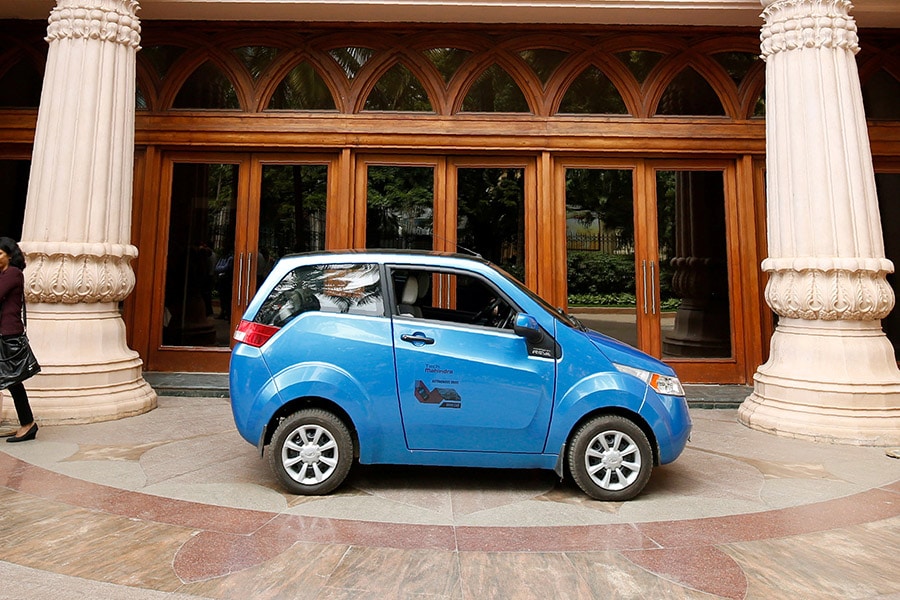
EVs and India: A golden opportunity: Sanjay Puri
An entire ecosystem can be built around electric vehicles, like the one for smartphones

Image: Abhishek N. Chinnappa / Reuters
1) Tesla: It has made owning an EV cool across demographics. It has created a huge buzz in the US, which is reflected in its market cap. Although its sales numbers are relatively low, Tesla is an influencer brand that has changed the dynamics of the game. Tesla’s edge has forced other auto companies to rethink their EV plans.

3) Battery price: Battery prices dropped by 80 percent between 2010 and 2016. An additional decrease is expected due to innovation. This will bring a pricing parity between EV and ICE (internal combustion engine), around $6,000.
With the Indian government pushing for EVs, there is a significant opportunity for an entire ecosystem to be built similar to the one for smartphones. This ecosystem will comprise the following:
OEMs
Indian OEMs are already feeling the pressure–as indicated by announcements from Tata Motors, Mahindra and even Maruti–as to how they intend to tackle this opportunity and challenge. Mahindra is ahead of the game by virtue of its acquisition of Reva in 2010 and having a technical partner in Tech Mahindra. Tata, Maruti and TVS should not be discounted due to their size, especially as Tata has Tata Consultancy Services and other tech collaborators in its orbit.
Tyre suppliers
Tomorrow’s vehicles will be designed differently and these companies need to innovate and change for the domestic market as well as support their global client base. This is an opportunity for tier suppliers to leverage their technical skills to become global innovation leaders.
Ride-sharing companies
Ola just announced it will procure electric autorickshaws for its users. Ola and Uber are driving the design and fuelling consumption of vehicles. This has auto manufacturers excited. If Ola wants 10,000 EVs, there are 10 OEMs ready to work with them.
Startups
These companies are the ones that will be pushing the cycle of innovation assuming funding is forthcoming from OEMs and tier suppliers. If the OEMs/tier suppliers partner with startups, India could become a hub of EV innovation like China has become. China is currently dominating in the EV and battery space (25% of world production) due to government policies, incentives etc. There are many well-funded Chinese entities producing EVs. This needs to happen in India as well with startups in the batteries, charging stations and other spaces for the ecosystem to flourish. They will also require IP protection, investment support and mentorship.
Policymakers
Policymakers need to be innovative, visionary and practical. A grand vision also needs to be practically linked to the reality of existing infrastructure like charging stations, costs and incentives. Given the technological expertise that exists in India and its growing market for automobiles and vehicles, there is a unique opportunity for its innovators to carve a place for themselves in the EV market domestically and globally.
(The writer is founder of AutoNebula, an accelerator incubating connected mobility startups)
(This story appears in the 30 November, -0001 issue of Forbes India. To visit our Archives, click here.)
X




